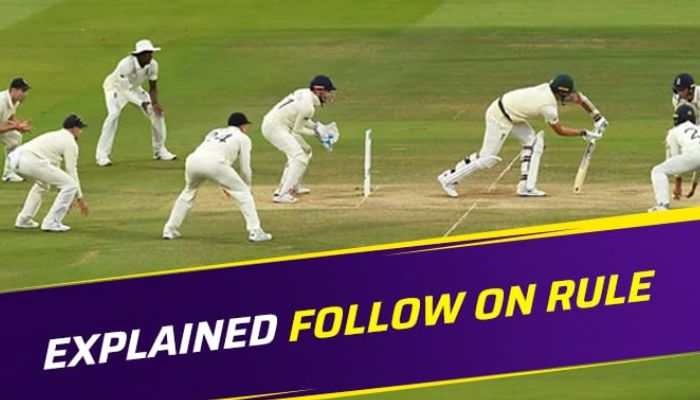Follow-On Rule Explained: What Happens If India Can't Score 246 Against Australia In Gabba?
Despite the setback, India remained focused on the task at hand – surviving the follow-on.
Trending Photos
)
The ongoing third Test between India and Australia at the Gabba has reached a crucial juncture, with India facing a potential follow-on situation that could spell disaster for their chances of salvaging the match. As Day 4 unfolded, India was fighting to avoid a follow-on, needing to score 246 runs in their first innings to keep Australia from forcing them to bat again. But what exactly is the follow-on rule, and why is it so critical for India to avoid it in this Test?
Also Read: KL Rahul & Athiya Shetty’s Combined Net Worth: Power Couple's Lavish Lifestyle - In Pics
Understanding the Follow-On Rule in Test Cricket
In Test cricket, the follow-on rule is a significant aspect of the game that can heavily influence the outcome of a match. According to the MCC Law 14.1.1, if a team bats second and concedes a lead of 200 or more runs after the first innings, the team batting first has the right to ask the opposing team to follow their innings. Essentially, the team that leads by 200 or more runs can force the trailing team to bat again without a break, potentially ending the match sooner.
This rule becomes particularly crucial in a five-day Test, where time is a critical factor. The follow-on scenario can be a psychological blow for the team asked to bat again, especially when they're struggling to make runs. In this case, with Australia posting a daunting first-innings total of 445 runs, India needs to reach 246 runs to avoid the follow-on. Failing to do so could result in Australia forcing India to bat again, leaving them with little hope of recovering from the huge deficit.
India’s Struggle to Avoid the Follow-On
On Day 4, India was in a precarious position at 167 for six, still 79 runs short of avoiding the follow-on. The pressure was mounting as Ravindra Jadeja (41) and Nitish Kumar Reddy (7) tried to hold the fort. The tension in the Indian camp was palpable, as every run mattered. With the rain causing frequent disruptions, the pressure on these two batters to score quickly and avoid the follow-on only intensified.
India’s position was further complicated by the fact that they were still 278 runs behind Australia’s first-innings total of 445. However, the immediate concern was not the 278-run deficit but the 79 runs needed to avoid the follow-on. This meant that even though India had a mountain to climb, getting past the follow-on target was their first priority to stay alive in the game.
Why the Follow-On is Crucial in This Test
Australia's ability to force a follow-on could significantly alter the course of the match. If India were forced to bat again, the pressure of chasing a large total would mount, and Australia would have a golden opportunity to seal the match by an innings win. This scenario would effectively rule out any chance of India winning the Test, and with the series already tilted in Australia’s favor, it would be a massive setback for the visitors.
By avoiding the follow-on, India would at least ensure that Australia would have to bat again, consuming valuable time. If India manages to dismiss Australia in their second innings, they would then have a chance to set a target, however difficult that may be. The follow-on rule, therefore, holds the key to India’s survival in the Gabba Test.
What Happened Before Lunch on Day 4?
Before lunch on Day 4, Steve Smith produced a stunning catch that denied KL Rahul a much-needed century, leaving India in further jeopardy. Rahul had been looking solid at 84 when he was dismissed by Nathan Lyon, caught by Smith in the slips. This wicket broke a promising 67-run partnership between Rahul and Jadeja, putting more pressure on India’s middle and lower order. The dismissal of Rahul was a vital breakthrough for Australia, who were looking to capitalize on India’s fragile batting line-up.
Despite the setback, India remained focused on the task at hand – surviving the follow-on. With rain continuing to disrupt play, every moment became more critical for both teams. India, especially, needed to ensure that they would not fall prey to the follow-on, as that would likely mark the end of their hopes in the Test.
Stay informed on all the latest news, real-time breaking news updates, and follow all the important headlines in india news and world News on Zee News.
Live Tv







)
)
)
)
)
)
)
)
)
)
